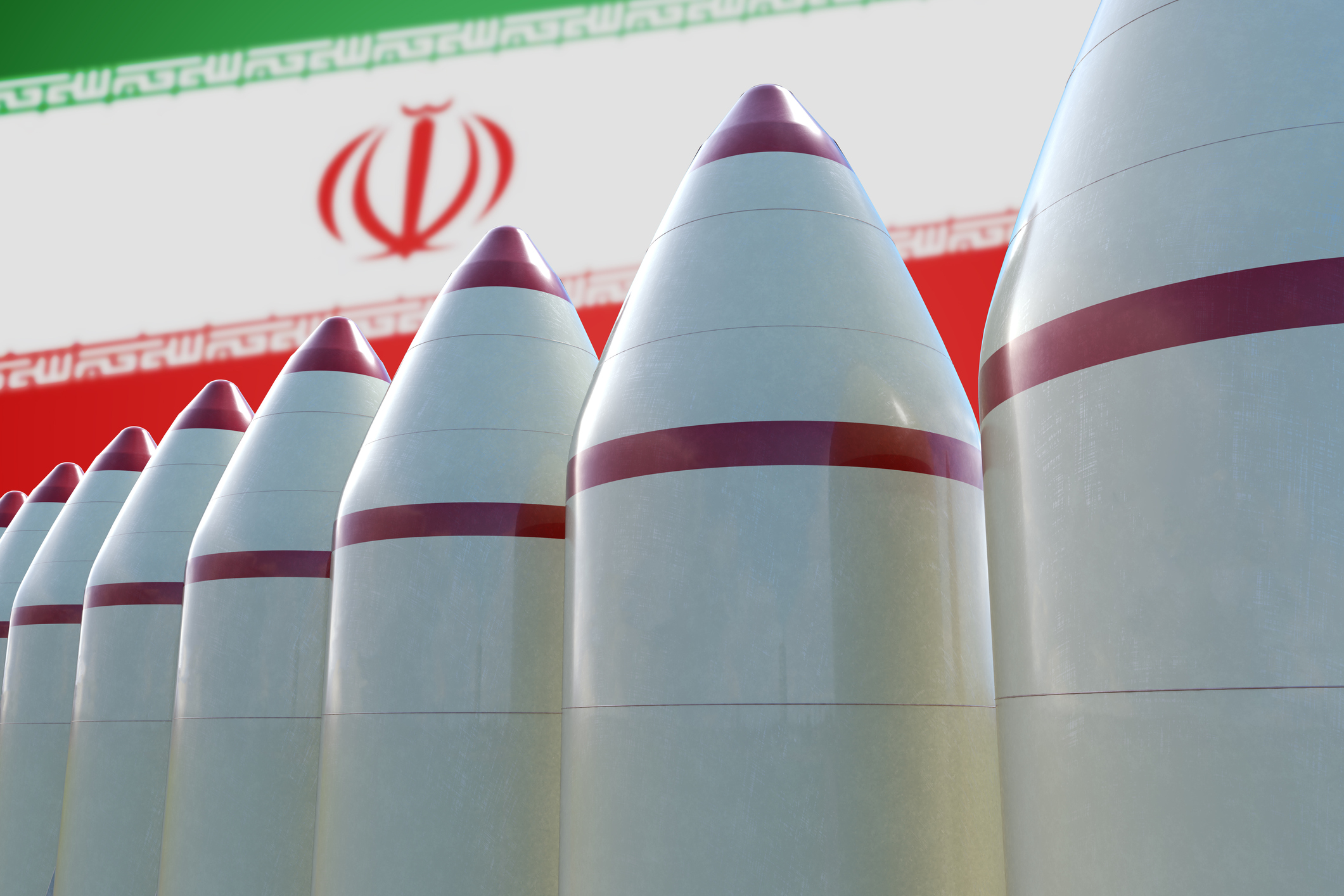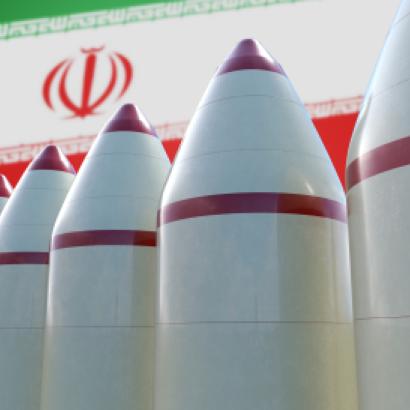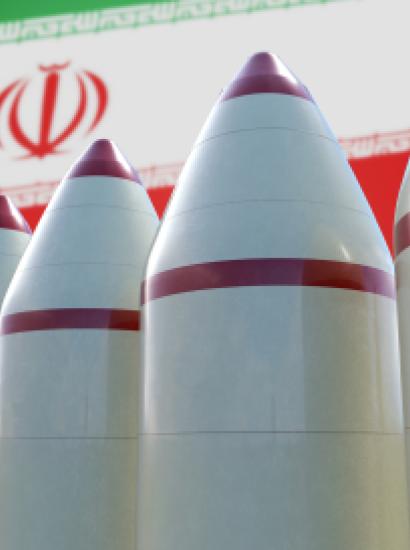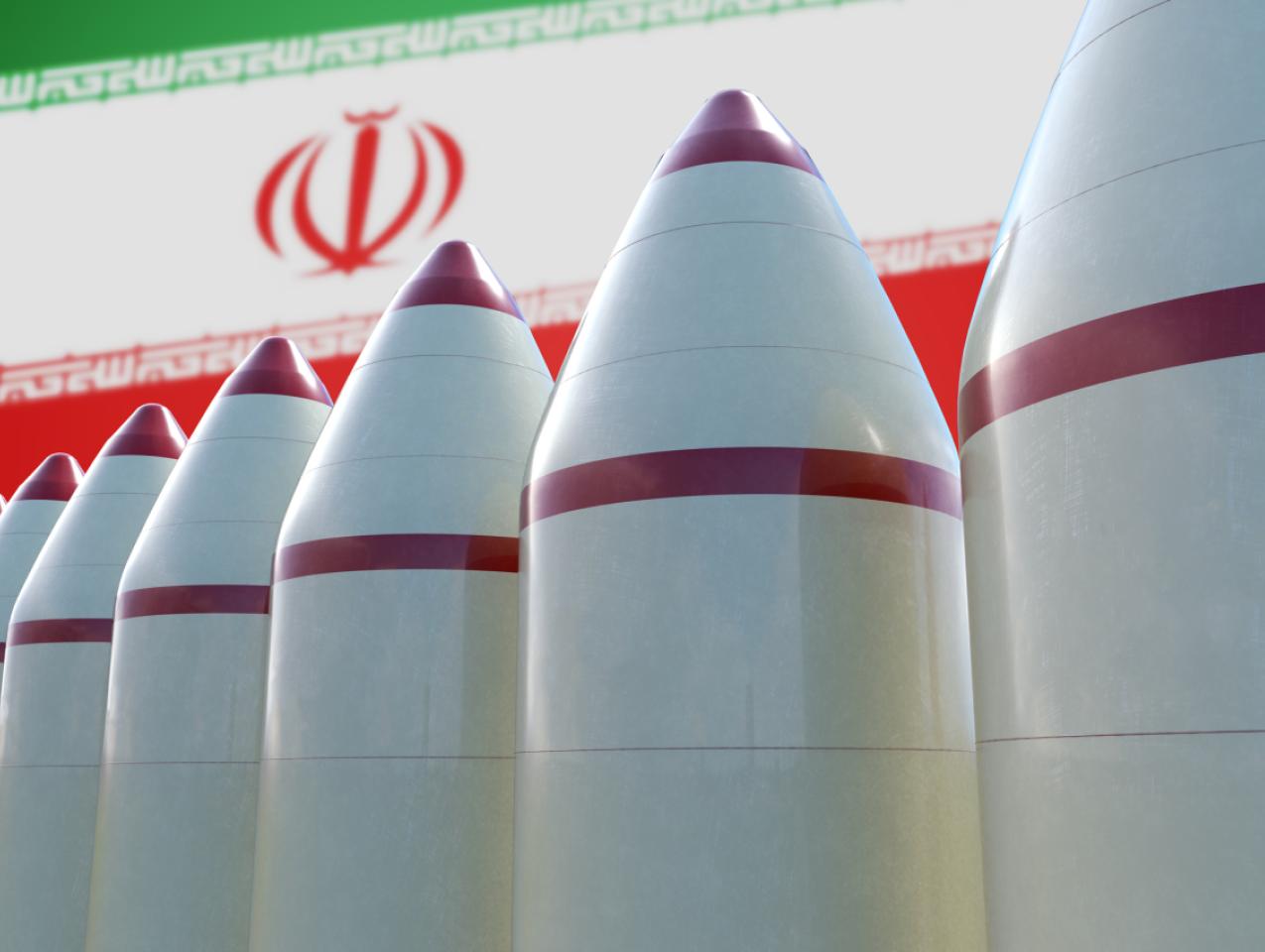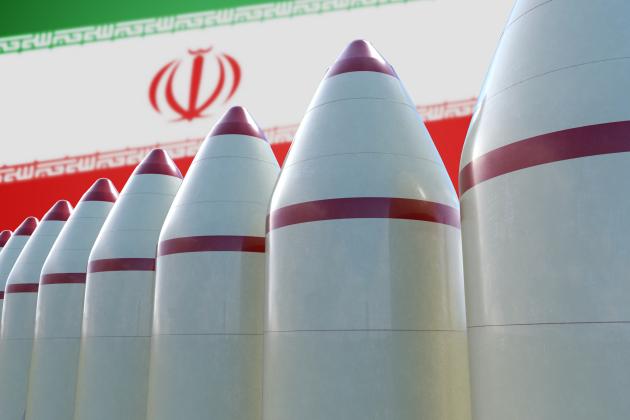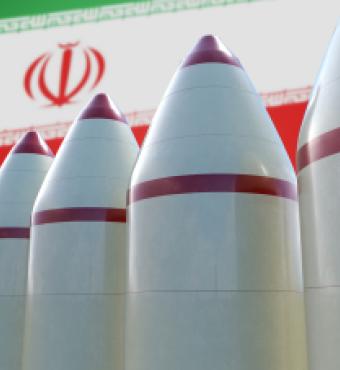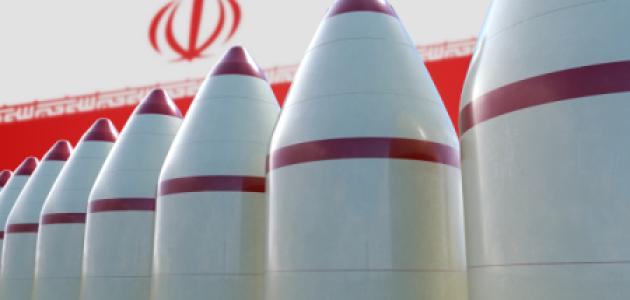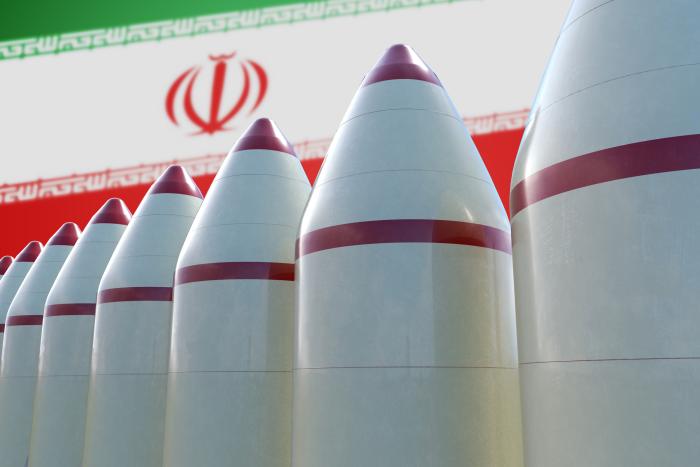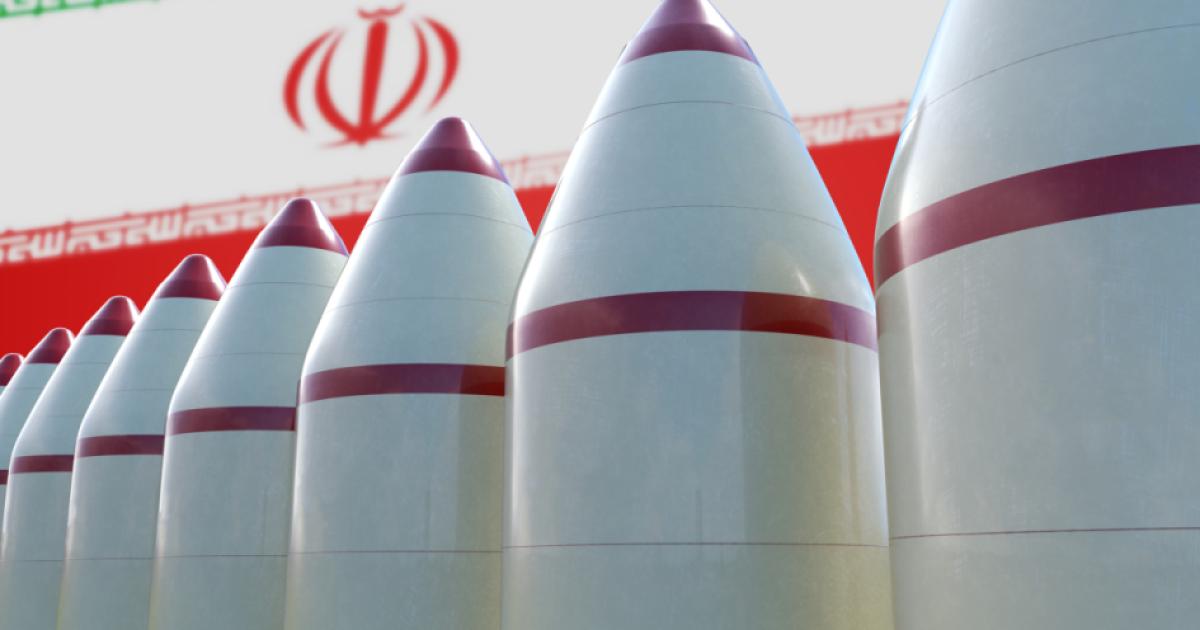- International Affairs
- Key Countries / Regions
- Middle East
- Security & Defense
- US Defense
- US Foreign Policy
- Politics, Institutions, and Public Opinion
THE ISSUE
Within the next several weeks the United States and its partners could well agree with Iran for the ‘return’ of the U.S. and Iran to the provisions of the 2015 “Joint Comprehensive Program of Action” or JCPOA regulating Iran’s nuclear programs. Certain outstanding issues within the negotiations and the larger questions related to Iran and its neighborhood, could, however, still derail an agreement; and even with an agreement the larger problem of Iran will remain.
In Vienna, as part of the informal “P5+1 group, the United States is negotiating a return to the provisions of the JCPOA agreed to in 2015 between the P5+1 and Iran. (The P5+1 or “P3+3” consists of the five UN Security Council permanent member states U.S., UK, France, Russia, China, plus Germany and the EU foreign policy chief). President Trump pulled the United States out of the JCPOA in 2018. Aside from unimportant administrative measures, this ‘pulling out’ in practice consisted of lifting the waivers which the Obama administration, as specified in the JCPOA, granted to stop the effect of sanctions on Iran for its nuclear program. Trump felt the JCPOA time limits on Iran’s activities were too short, and raised various other issues inside and outside the JCPOA. His intent was to pressure Iran to negotiate a better deal - which did not happen - but also to put pressure on the Iranian economy through sanctions in order to limit its regional adventurism. That had some effect.
Iran in response limited cooperation with the International Atomic Energy Commission (IAEA), and increased beyond the norms allowed in the JCPOA (1) its holdings of enriched uranium (the JCPOA limited that to 300 kg, Iran now has many times that amount), (2) the degree of enrichment (The JCPOA limited enrichment to 3.67%, Iran is now enriching to 20% and recently, 60%), (3) the number of centrifuges operating, and (4) the type of centrifuges. It also increased heavy water holdings. As a result, the ‘breakout’ time to reach sufficient highly enriched (‘fissile”) uranium to manufacture a nuclear device has decreased from one year, after the JCPOA entered into effect, to, at present, roughly three-four months - an obvious concern. Nevertheless, both the steps taken by the Trump administration and Iran are technically easily reversible; the whole point of the current talks is to agree to reverse them.
Both the Biden administration and Iran have stated a desire to return to the JCPOA. The other P5+1 states for various reasons also all strongly support return. Yet after almost four months of negotiation the two sides have not agreed on a modality for return. Questions of trust, but also of substance, including ‘new’ demands each make of the other, are blocking final agreement. The U.S. seeks, at a minimum, Iranian commitments to negotiate a follow-on agreement which would impose longer term limits on Iran’s nuclear program, as well as new negotiations on Iran’s missile program (largely excluded from the JCPOA) and its destabilizing role in the region (totally excluded from the JCPOA). Some in Washington and in the IAEA also are seeking clarifications of evidence which contradict Iran’s commitments to never pursue nuclear weapons made in the JCPOA (as well as legally in the NPT—Non-Proliferation Treaty), including voluminous data on weaponizing nuclear fissile materials, seized by Israel in 2018, suspicious uranium metal discovered recently by the IAEA, and the logic behind Iran’s enrichment to 60%, a clear harbinger of weaponizable fissile material.
Iran desires Washington to not only waive or eliminate the JCPOA sanctions which President Trump reinstated, but to lift, as well, new Trump era sanctions. Such sanctions, targeting Iran’s behavior in non-nuclear areas, such as terrorism, human rights, and money laundering, were explicitly allowed in the JCPOA. Other sanctions, both prior to and during the Obama administration, also remained after the JCPOA went into effect. But Iran argues, and some independent analysts agree, that the Trump administration used new sanctions to target institutions already singled out by the JCPOA, such as the Iranian central bank. Iranians are also demanding reparations from the U.S. due to their lost oil revenues after 2018. Finally, the two sides have argued about whether one or the other must “return to compliance” first before the other begins.
The Biden administration, and certainly the U.S. Congress, are unlikely to agree to reparations, but there are some hints that the administration will remove sanctions beyond those required explicitly in the JCPOA in order to get a deal, with the argument that the Trump administration’s real goal in imposing such sanctions was to make a return to the JCPOA more difficult. Iran is balking, as it did throughout the JCPOA, at the inclusion in any deal, directly or indirectly of non-nuclear issues. There is a general sense that the best chance for a negotiating success would be before the mid-June Iranian elections. Iranian Supreme Leader Khamenei has ‘cooked the books’ by ruling out any moderate presidential candidates to replace current President Rouhani (who cannot run for a new term), selecting instead a hardliner, Judicial leader Raisi. While nuclear decisions are ultimately made by the Supreme Leader, Rouhani is strongly in favor of a return, and likely to be more flexible in negotiations.
DISSECTING THE ‘POLITICAL’ JCPOA
The JCPOA is a complicated ‘non-agreement’ (not legally binding, and not even signed by the negotiating partners); along with an associated UN Security Council Resolution, 2231, it establishes in most cases temporary limitations on Iran’s nuclear activities such as enrichment. In return, the P5+1 states agreed to lift or waive (to be later lifted) sanctions related to Iran’s nuclear program, imposed by the Security Council, EU, or U.S., along with vague commitments to economic cooperation. To understand the issues at play in the current negotiations, and the rationale behind the JCPOA provisions in the first place, it’s important to move beyond mind-numbing technical details and focus on the political issues at stake.
At the time the agreement came into effect, Iran was as little as a few weeks from producing enough fissile material to create one nuclear device, and that deadline drove policy towards Iran. Washington was committed to strike if Iran ‘rushed to a bomb,’ and Israel probably would also take action, in either case triggering possibly a regional war. Iran did not want war and was anxious to escape the crushing sanctions on its economy, but not at the price of permanently surrendering its nuclear ambitions.
In a nutshell, the U.S. and European partners (Russia and China played a secondary role) decided that Iran could not be compelled to permanently forego enrichment, as technically it is not prohibited in the NPT, but that it could be persuaded to accept time-limited restrictions along with pervasive inspection in return for termination of all nuclear-related sanctions, and renewed economic cooperation. This compromise dramatically reduced the risk of a rushed Iranian ‘breakout,’ albeit only for ten plus years. But the Obama administration was willing to accept a ticking clock on enrichment to ‘kick the can down the road,’ and reduce military tensions at a time when the U.S. public was fed up with Middle East conflicts.
In addition, the Europeans and at least some Americans saw the JCPOA between the West and Iran as potentially transformational. Following a philosophy long current among some in the West, Iran’s conflicts with the U.S., with Israel, and with its neighbors were seen not as the product of an expansionist ideology, but the result of failures of trust and communication, with the West as much or more at fault. This mindset informed those pursuing an agreement, and justified the time limits on the nuclear restraints (the idea being that an Iran benefiting from the JCPOA would recognize that its bad nuclear and other behavior was unnecessary). But in response, this thinking mobilized many against the JCPOA who did not accept this theory of Iranian behavior.
Thus the JCPOA produced an uncomfortable compromise. Iran agreed to limits on heavy water projects over the long term, and temporarily on its enrichment, resulting in as noted a full year “breakout time” of unrestricted enrichment to obtain sufficient fissile material for a device. As the JCPOA also included intrusive IAEA inspections, the international community believed it would spot quickly any such breakout from the JCPOA provisions. The problem is that those limitations on Iran’s enrichment are in place for a maximum of fifteen years after the JCPOA came into effect in early 2016, i.e., the beginning of 2031, with some provisions lapsing beginning in 2026. This is a major concern for the international community due to Iran’s malign activity beyond its borders since 1979, the clandestine nature of its enrichment, and the pursuit of weaponization technology, known since 2007.
These underlying concerns about Iran ‘after’ it emerges from the JCPOA limitations between 2026 and 2031, now only a few years away, and the failure of the JCPOA to limit at all Iran’s other belligerent behavior, led to opposition to the accords in Israel, the Arab world, and the U.S. Senate (58 Senators, two less than necessary to block the agreement, voted against it in 2015), and eventually to Trump’s pullout and the “Abraham Accords” between Israel and moderate Arab states with a common position against Iran.
LIKELY WAYS FORWARD
The simplest, cleanest and probably still most likely scenario would be for the U.S. and Iran to return to a clean JCPOA without any new conditions of the sort covered above. The U.S. could concede certain additional Trump sanctions which appear, such as those on the Iranian Central Bank, to be ‘nuclear sanctions under another name.’ Other issues can be diplomatically waffled through vague one-sided declarations or joint statements that point to possible future discussions without any real commitment.
In such a scenario, at least part of the U.S. Congress, many in the analytical community, and Middle Eastern partners of the U.S., will all press Washington for concrete action against Iran’s advance through the region, its support for Hamas, and build-up (and use) of missiles endangering the region. President Obama’s failure to act here was a major reason for the controversy associated with the JCPOA in 2015-16.
The second most likely scenario is Iranian refusal to do a deal. Iran could assume that even as it approaches a nuclear military capability, the Biden administration will not strike, and will constrain Israel from doing so. Iran also may assume that China’s stated willingness to invest heavily in Iran, and purchase its oil despite U.S. oil sanctions, renders much less attractive the economic benefits of a return to the JCPOA and ending of sanctions. This latter scenario, compatible with the harder line the Iranian leadership appears to be taking with the selection of Raisi as likely next president, will mean a much more dangerous Middle East, and far greater difficulty for the U.S. to ‘pivot’ militarily away from the region towards China.
If the first scenario, a clean return to the JCPOA is possible, the Biden administration should take it. The drama associated with an Iran voicing bellicose threats, challenging the U.S. Navy in the Gulf, while potentially weeks away from a nuclear weapon, traumatized both the Bush and Obama administrations. It is also worthwhile to test the thesis that an Iran ‘cooperating’ with the West diplomatically will show self-restraint, although that did not happen after the JCPOA from 2016 forward. But in any case, the administration, to avoid a repeat of the tidal wave of criticism, needs to act forcefully to contest Iran’s objectionable actions in the region - in Lebanon, Iraq, Yemen and Syria, with Hamas, and against major American allies.
Ambassador James Jeffrey is Chair of the Middle East program at The Wilson Center.







